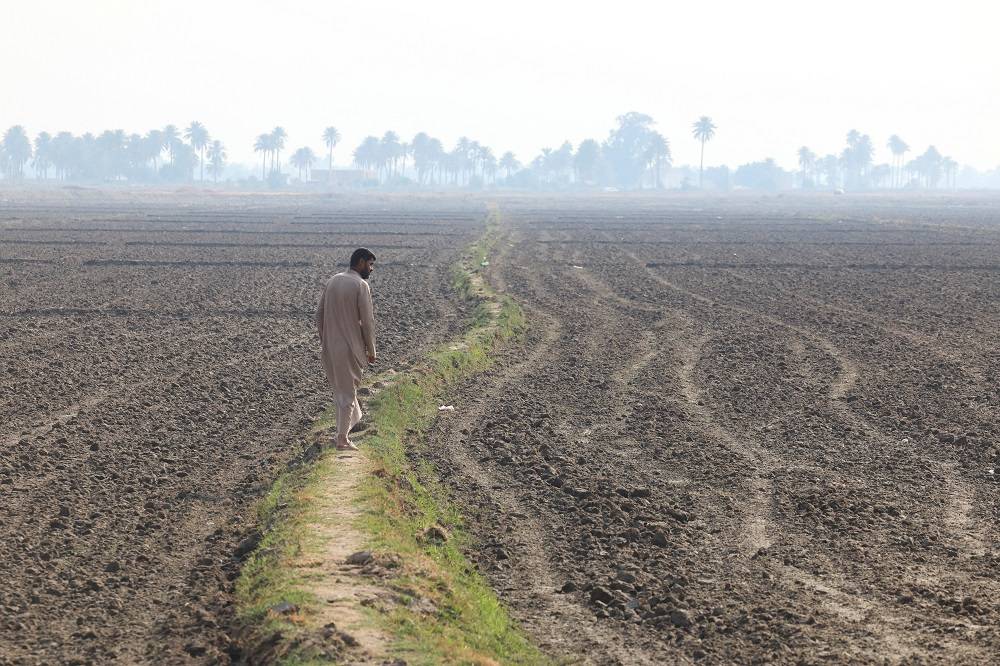Iran is talking tough — while still wanting to talk more with the United States over a possible nuclear deal.
In the last days, Tehran has backed an attack by Yemen's Houthi militants that slipped through Israel's missile defenses to strike near Ben-Gurion International Airport. It aired footage of its own ballistic missile test while defense minister called out threats by US Defense Secretary Pete Hegseth against Iran. And an organization linked to its paramilitary Revolutionary Guard unveiled a new mural with a map of Israel overlaid by possible missile targets in the shape of a Yemeni jambiyya, an ornamental dagger worn by Yemeni men.
But all the while, Iran maintains it wants to reach a nuclear deal with the US after talks scheduled to take place last weekend in Rome didn't happen. That's even as Trump administration officials continue to insist that Tehran must give up all its ability to enrich uranium in order to receive sanction relief — something Iran repeatedly has said is a nonstarter for the negotiations.
Israel-Hamas war changes equation for Iran
All this together can feel contradictory. But this is the position where Iran now finds itself after having been ascendant in the Mideast with its self-described “Axis of Resistance,” countries and militant groups finding common cause against Israel and the US.
That changed with the attack by the Palestinian militant group Hamas on Israel on Oct. 7, 2023, which killed some 1,200 people and saw 250 others taken hostage back to the Gaza Strip. Israel launched a devastating war on Hamas in Gaza that rages on even today — and may be further escalating after Israel approved plans Monday to capture the entire Gaza Strip and remain there for an unspecified amount of time. Israel’s war has killed more than 52,000 people in Gaza, many of them women and children, according to Palestinian health officials, who do not distinguish between combatants and civilians in their count.
In the course of the war, Hamas, Lebanon's Hezbollah and other Iran-backed militants have been beaten back by Israeli attacks. Syrian President Bashar Assad, long backed by Iran, saw his family's over 50-year rule end in December as opposition factions swept the country.
That's left Iran with just Yemen's Houthi militants, though they too now face an intensified campaign of strikes by the Trump administration.
Iran carefully applauds Houthi strike on Israel
The strike Sunday on Ben-Gurion repeatedly earned highlights in Iranian state media. However, Iran's Foreign Ministry made a point to insist that the attack had “been an independent decision” by the group.
Expert opinion varies on just how much influence Iran wields over the Houthis. However, Tehran has been instrumental in arming the Houthis over Yemen's decadelong war in spite of a United Nations arms embargo.
“The Yemeni people, out of their human feelings and religious solidarity with the Palestinians, and also to defend themselves in the face of continuous aggression by America, have taken some measures," Iran’s Foreign Ministry spokesman Esmail Baghaei said Monday.
Meanwhile, Iranian Defense Minister Gen. Aziz Nasirzadeh called out comments by his American counterpart who had warned that Iran would “pay the CONSEQUENCE” for arming the Houthis with weapons.
“I advise the American threatening officials, especially the newcomer defense minister of the country, to read the history of Iran in the recent four decades," the general said. "If they read, they will notice that they should not speak to Iran using the language of threats.”
Iran has not, however, responded to Israeli airstrikes targeting its air defenses and ballistic missile program in October.
Nuclear deal remains a top Iranian priority
But getting to a new nuclear deal with the US, which could see Tehran limit its enrichment and stockpile of uranium in exchange for the lifting of economic sanctions, remains a priority for Iran. Its troubled rial currency, once over 1 million to $1, has strengthened dramatically on just the talks alone to 840,000 to $1.
The two sides still appear a long way from any deal, however, even as time ticks away. Iranian media broadly described a two-month deadline imposed by President Donald Trump in his initial letter sent to Iran's Supreme Leader Ali Khamenei. Trump said he wrote the letter on March 5.
Meanwhile, the US campaign on Yemen and Israel's escalation in Gaza continues to squeeze Tehran.
That's on top of American officials including Trump threatening sanctions on anyone who buys Iranian crude oil, as well as following a new, harder line saying Iran shouldn't be able to enrich uranium at all. Israeli Prime Minister Benjamin Netanyahu, who strongly encouraged Trump to unilaterally withdraw American in 2018 from Iran's nuclear deal with world powers, also has been pushing for the same.
Iran likely has been trying to get messages to America despite last weekend's planned talks in Rome being postponed. Iranian Foreign Minister Abbas Araghchi flew to Islamabad to meet his Pakistani counterpart, Ishaq Dar. A readout from Pakistan's Foreign Ministry acknowledged the men discussed the nuclear negotiations.
Araghchi got a colder reception from Kaja Kallas, the foreign policy chief of the European Union. While European nations have had warmer ties to Iran in the past, Tehran's arming of Russia in its war on Ukraine has angered many in the EU.
I called on Iran to stop military support to Russia and raised concerns over detained EU citizens and human rights," Kallas wrote Monday on the social platform X. “EU-Iran ties hinge on progress in all areas.”










